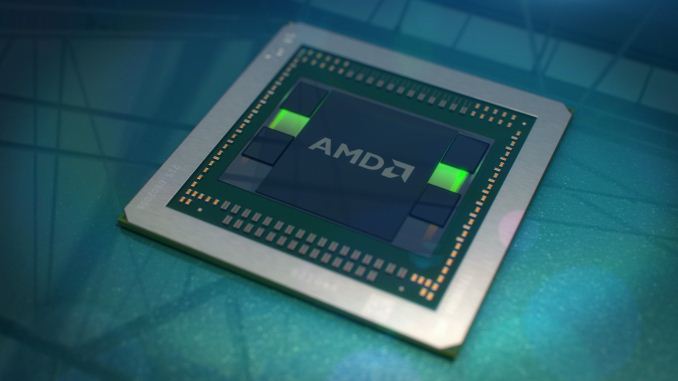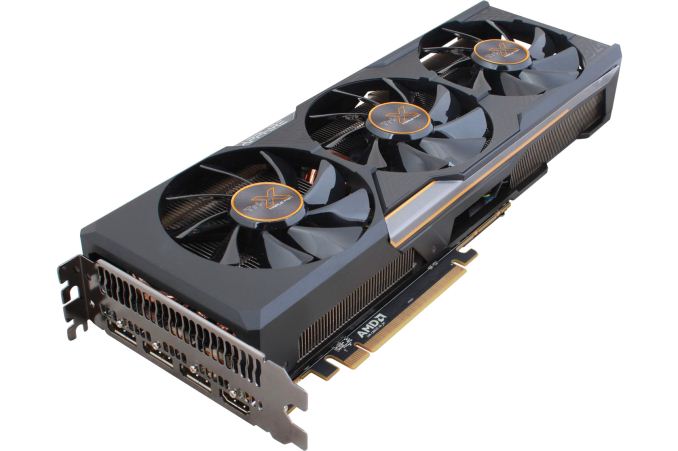The AMD Radeon R9 Fury Review, Feat. Sapphire & ASUS
by Ryan Smith on July 10, 2015 9:00 AM ESTFinal Words
Bringing this video card review to a close, we’ll start off with how the R9 Fury compares to its bigger sibling, the R9 Fury X. Although looking at the bare specifications of the two cards would suggest they’d be fairly far apart in performance, this is not what we have found. Between 4K and 1440p the R9 Fury’s performance deficit is only 7-8%, noticeably less than what we’d expect given the number of disabled CUs.
In fact a significant amount of the performance gap appears to be from the reduction in clockspeed, and not the number of CUs. And while overclocking back to R9 Fury X clockspeeds can’t recover all of the performance, it recovers a lot of it. This implies that Fiji on the whole is overweight on shading/texturing resources, as it’s not greatly impacted by having some of those resources cut off.
Consequently I can see why AMD opted to launch the R9 Fury X and R9 Fury separately, and to withhold the latter’s specifications until now, as this level of performance makes R9 Fury a bit of a spoiler for R9 Fury X. 7-8% makes R9 Fury notably slower than R9 Fury X, but it’s also $100 cheaper, or to turn this argument on its head, the last 10% or so that the R9 Fury X offers comes at quite the price premium. This arguably makes the R9 Fury the better value, and not that we’re complaining, but it does put AMD in an awkward spot.
As for the competition, that’s a bit more of a mixed bag. R9 Fury X had to compete with GTX 980 Ti but couldn’t surpass it, which hurt it and make the GTX the safer buy. On the other hand R9 Fury needs to compete with just the older GTX 980, and while it’s by no means a clean sweep for AMD, it’s a good outcome for AMD. The R9 Fury offers between 8% and 17% better performance than the GTX 980, depending on if we’re looking at 1440p or 4K. I don’t believe the R9 Fury is a great 4K card – if you really want 4K, you really need more rendering power at this time – but even at 1440p this is a solid performance lead.
Along with a performance advantage, the GTX 980 is also better competition for the R9 Fury (and Fiji in general) since the GTX 980 is only available with 4GB of VRAM. This negates the Fiji GPU’s 4GB HBM limit, which is one of the things that held back the R9 Fury X against the GTX 980 Ti. As a result there are fewer factors to consider, and in a straight-up performance shootout with the GTX 980 the R9 Fury is 10% more expensive for 8%+ better performance. This doesn’t make either card a notably better value, but makes the R9 Fury a very reasonable alternative to the GTX 980 on a price/performance basis.
The one area where the R9 Fury struggles however is power efficiency. GTX 980’s power efficiency is practically legendary at this point; R9 Fury’s is not. Even the lower power of our two R9 Fury cards, the ASUS STRIX, can’t come close to GTX 980’s efficiency. And that’s really all there is to that. If energy efficiency doesn’t matter to you then the R9 Fury’s performance is competitive, otherwise GTX 980 is a bit slower, a bit cheaper, and uses a lot less power. That said, AMD’s partners do deserve some credit for keeping their acoustics well under control despite the high power and heat load. It’s not an apples-to-apples comparison against the reference GTX 980 and its blower, but at the very least picking R9 Fury over GTX 980 doesn’t mean you have to pick a loud card as well.
And that brings us to the third aspect of this review, which is comparing the R9 Fury cards from Sapphire and ASUS. Both partners have come to the plate with some very good open air cooled designs, and while it’s a bit unusual for AMD to launch with so few partners, what those partners have put together certainly paint R9 Fury in a positive light.
Picking between the two ends up being a harder task than we expected, in part because of how different they are at times. From a performance perspective the two cards offer very similar performance, with Sapphire’s mild factory overclock giving them only the slightest of edges, which is more or less what we expected.
However the power and acoustics situation is very different. On its own the ASUS STRIX’s acoustics would look good, but compared to the Sapphire Tri-X’s deliciously absurd acoustics it’s the clear runner-up. On the other hand the ASUS card has a clear power efficiency advantage of its own, but I’m not convinced that this isn’t just a byproduct of the ASUS card randomly receiving a better chip. As a result I’m not convinced that this same efficiency advantage exists between all ASUS and Sapphire cards; ASUS’s higher voltage R9 Fury chips have to go somewhere.
In any case, both are solid cards, but if we have to issue a recommendation then it’s hard to argue with the Sapphire Tri-X’s pricing and acoustics right now. It’s the quietest of the R9 Fury cards, and it’s slightly cheaper as well. Otherwise ASUS’s strengths lie more on their included software and their reputation for support than in their outright performance in our benchmark suite.
And with that, we wrap up our review of the second product in AMD’s four Fiji launches. The R9 Fury was the last product with a scheduled launch date, however AMD has previously told us that the R9 Nano will launch this summer, meaning we should expect it in the next couple of months. With a focus on size and efficiency the R9 Nano should be a very different card from the R9 Fury and R9 Fury X, which makes us curious to see just what AMD can pull off when optimizing for efficiency over absolute performance. But that will be a question for another day.












288 Comments
View All Comments
Oxford Guy - Saturday, July 11, 2015 - link
2% cost difference is likely to be erased by sale pricing at various times.darkfalz - Saturday, July 11, 2015 - link
My 980 is about 15% from stock, and it's a poor overclocker despite running cool. These cards struggle to hit 10%. I also can't go back 6 months ago and buy a R9 Fury. And Nvidia's next release is likely around the corner. I think they're approximately equal value - which is good for AMD fans, but it's been a long wait for them to have a card comparable to what NVIDIA enthusiasts have been enjoying for a year!Flunk - Friday, July 10, 2015 - link
It's nice to see AMD win a segment. I'm not sure that the Fury X matters that much in the grand scheme of things, seeing that it's the same price as the better performing Geforce 980 TI.The Fury seems to overclock to almost match the Fury X, making it a good enthusiast buy.
cmikeh2 - Friday, July 10, 2015 - link
If you're willing to over clock though, you can get a good 15+ percent out of the 980 and pretty much bring it even with an OCed Fury for a little less money.looncraz - Friday, July 10, 2015 - link
But as soon as voltage control is unlocked the fury will probably eek out at least another 100MHz or more, which will put it healthily out of reach of the 980. And, once a few more driver issues (such as GTA V performance) the performance of the Fury will improve even more.HBM has a different performance profile, and AMD is still accommodating that. And, of course, if you turn the nVidia image quality up to AMD levels, nVidia loses a few extra percent of performance.
The GTX 980 vs R9 Fury question is easy to answer (until a 980 price drop). The Fury X vs 980 Ti question is slightly more difficult (but the answer tends to go the other way, the AIO cooler being the Fury X's main draw).
D. Lister - Saturday, July 11, 2015 - link
"if you turn the nVidia image quality up to AMD levels, nVidia loses a few extra percent of performance."Surely we have some proof to go along with that allegation... ?
silverblue - Saturday, July 11, 2015 - link
I've heard the same thing, although I believe it was concerning the lack of anisotropic filtering on the NVIDIA side. However, anisotropic filtering is very cheap nowadays as far as I'm aware, so it's not really going to shake things up much whether it's on OR off, though image quality does improve noticeably.D. Lister - Saturday, July 11, 2015 - link
Err...http://international.download.nvidia.com/webassets...
You mean to say that it doesn't work like it is supposed to?
silverblue - Monday, July 13, 2015 - link
I'm not sure what you're getting at. In any case, I was trying to debunk the myth that turning off AF makes a real difference to performance.FlushedBubblyJock - Wednesday, July 15, 2015 - link
no, there's no proof, the proof of course is inside the raging gourd of the amd fanboy, never be unlocked by merely sane mortal beings.